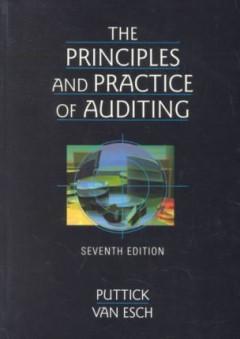Question
Sager Company manufactures variations of its product, a technopress, in response to custom orders from its customers. On May 1, the company had no inventories
Sager Company manufactures variations of its product, a technopress, in response to custom orders from its customers. On May 1, the company had no inventories of work in process or finished goods but held the following raw materials.
| Material M | 300 | units | @ | $ | 260 | = | $ | 78,000 | |||||
| Material R | 115 | units | @ | 250 | = | 28,750 | |||||||
| Paint | 60 | units | @ | 120 | = | 7,200 | |||||||
| Total cost | $ | 113,950 | |||||||||||
| On May 4, the company began working on two technopresses: Job 102 for Worldwide Company and Job 103 for Reuben Company. |
| a. | Purchased raw materials on credit and recorded the following information from receiving reports and invoices. |
| Receiving Report No. 426, Material M, 260 units at $260 each. |
| Receiving Report No. 427, Material R, 110 units at $250 each. |
| Record these purchases with a single journal entry. Enter the receiving report information on the materials ledger cards. |
| b. | Requisitioned the following raw materials for production. |
| Requisition No. 35, for Job 102, 162 units of Material M. |
| Requisition No. 36, for Job 102, 72 units of Material R. |
| Requisition No. 37, for Job 103, 84 units of Material M. |
| Requisition No. 38, for Job 103, 87 units of Material R. |
| Requisition No. 39, for 27 units of paint. |
| Enter amounts for direct materials requisitions on the materials ledger cards and the job cost sheets. Enter the indirect material amount on the materials ledger card. |
| c. | Received the following employee time tickets for work in May. |
| Time tickets Nos. 1 to 10 for direct labor on Job 102, $87,000. |
| Time tickets Nos. 11 to 30 for direct labor on Job 103, $59,000. |
| Time tickets Nos. 31 to 36 for equipment repairs, $22,250. |
| Record direct labor from the time tickets on the job cost sheets. |
| d. | Paid cash for the following items during the month: factory payroll, $168,250, and miscellaneous overhead items, $114,000. Use the time tickets to record the total direct and indirect labor costs. |
| e. | Finished Job 102 and transferred it to the warehouse. The company assigns overhead to each job with a predetermined overhead rate equal to 80% of direct labor cost. |
| Enter the allocated overhead on the cost sheet for Job 102, fill in the cost summary section of the cost sheet. |
| f. | Delivered Job 102 and accepted the customers promise to pay $500,000 within 30 days. |
| g. | Applied overhead to Job 103 based on the jobs direct labor to date. |
| Required: |
| Complete the materials ledger cards for Material M, Material R, and paint using the information given in part a and b. Complete the job cost sheets for Jobs 102 and 103 using the information given in part b, c, e and |




JOB COST SHEET ustomer's Name Worldwide Company Job No. Direct Materials Direct Labor overhead Costs Applied Requisition Number Amount Time Ticket Number Amount Total Total Total Summary of Costs Total cost of Job JOB COST SHEET ustomer's Name Reuben Company Job No. Direct Materials Direct Labor overhead costs Applied Requisition Number Amount Time Ticket Number Amount Total Total Summary of Costs Total cost of Job
Step by Step Solution
There are 3 Steps involved in it
Step: 1

Get Instant Access to Expert-Tailored Solutions
See step-by-step solutions with expert insights and AI powered tools for academic success
Step: 2

Step: 3

Ace Your Homework with AI
Get the answers you need in no time with our AI-driven, step-by-step assistance
Get Started


